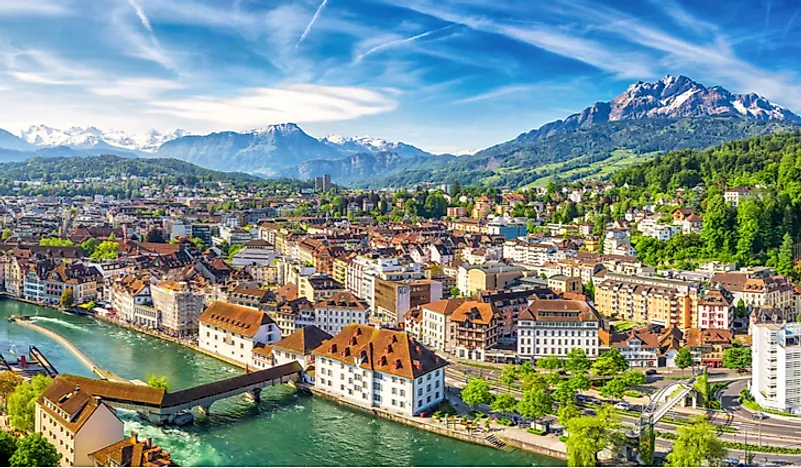Which Two Countries Used to Have the Same Flag?
Prior to the 1936 Summer Olympics, Haiti and Liechtenstein were sharing identical flags without realizing it.

A national flag represents a country’s beliefs, history, aspirations, and status among other factors. All 195 countries in the world have flags that have been designed with specific meaning for their symbols and colors. The designs of most of these flags have been altered over time, especially after the occurrence of important historical events in the country. Although no two national flags are the same, some flags closely resemble each other including Chad and Romania, Ireland and Ivory Coast, and Luxembourg and Netherlands. However, in history, two countries have once shared the same national flag without knowing.
Countries That Have Used Same Flag
For a very long time, Haiti and Liechtenstein used the same flag design without knowing. Both countries had a bicolored flag that featured two equal-sized horizontal bands of red and blue colors at the bottom and top respectively. It was during the 1936 Summer Olympics that Liechtenstein and Haiti discovered that they shared the same flag. With this discovery, the two countries decided to modify their flags by adding some symbols but retaining the original flag colors. Today, the two flags remain similar in color with the only difference being the symbols and their position on the flags.
The Current Haitian Flag
The bicolored flag comprises of two equal-sized blue-red horizontal bands at the top and bottom respectively. At the center of the flag is a white square containing the coat of arms of Haiti that was added to the flag following the discovery that the plain blue-red flag was shared by another country. The coat of arms comprises of atrophy of weapons on a green hill-like feature and a royal palm. The weapons symbolize the country’s readiness to defend its freedom while the royal palm symbolizes its independence. On top of the royal palm is the Phrygian cap. The green hill has a ribbon containing the motto “L’Union Fait La Force.” The flag’s proportion is 3 to 5, the same as that of Liechtenstein.
The Flag of Liechtenstein
The flag of Liechtenstein is a bicolor flag comprising of two equal horizontal bands of red and blue at the bottom and top respectively. The flag is defaced with a gold crown at the canton. The gold crown was added to the flag in 1937, just a year after discovering that the original blue-red flag was shared with Haiti. The colors and symbol on the national flag of Liechtenstein carry political, regional, and cultural meanings. The blue color symbolizes the sky during the day while the red color stands for the “evening fires” lit inside most homes throughout the country. The crown symbolizes the unity of the people and their prince. However, its color has always been disputed, with the World Factbook describing it as gold in color and as yellow by other sources. Sometimes the flag is flown vertically. In this case, the crown is rotated so that it is always facing upwards. The flag’s proportion is 3 to 5, the same as that of Haiti.
Which Two Countries Used to Have the Same Flag?More on Graphicmaps

Published on 2019-11-06
What is a Trade Embargo?

Published on 2019-09-16
What Is the Only Two-Sided State Flag?

Published on 2019-09-16
Which Country Flag Looks Like the Texas Flag?

Published on 2019-08-29
Flags That Resemble the US Flag

Published on 2019-08-20
What is Demography?

Published on 2019-07-23